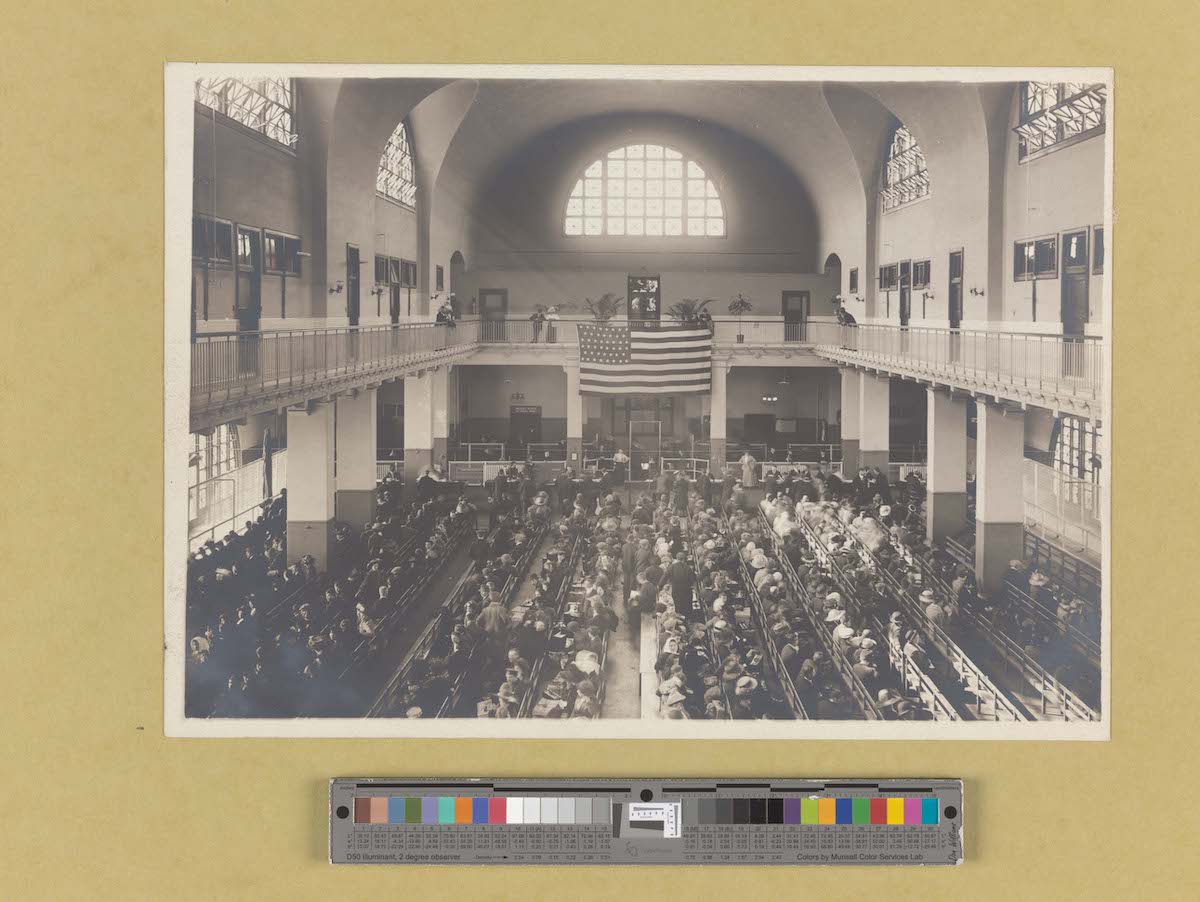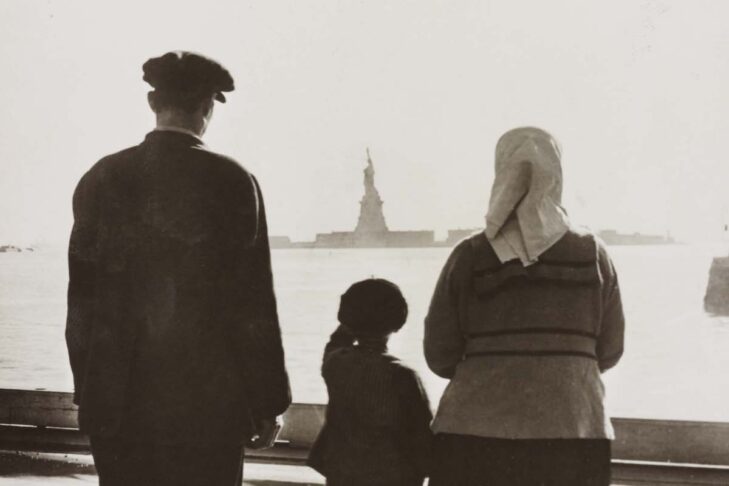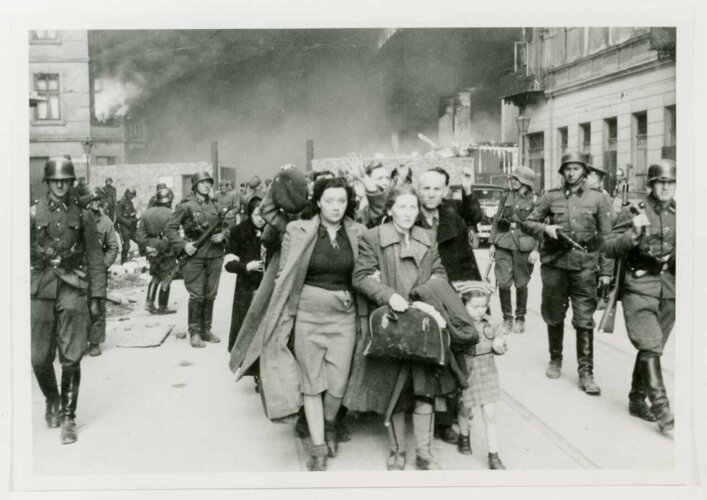On May 13, 1939, the St. Louis sailed from Hamburg with 937 passengers on board; almost all were Jewish refugees fleeing from the Third Reich. Two weeks later, on May 27, 1939, the Cuban government did not allow the St. Louis to land in Havana Harbor. The Cuban government had cancelled the passengers’ landing permit.
My mother, not quite four years old, lived down the street from the harbor in Old Havana. She remembered the incident in blurred outline, telling me the story when I was a teenager. She recalled her mother crying and her father pacing—all of it underlining their desperate whispering. In downtown Havana, marauding antisemitic crowds forced many terrified Cuban Jews into hiding at home.
There are questions about whether my grandfather attempted to acquire false baptismal papers for his family. As a Sephardic Jew, it must have been anathema to him to think about baptism in any form. His ancestors fled medieval Spain rather than submit to forced conversion.
On May 13, 1939, my father was finishing his junior year at Yale College. He knew he would enlist in a service branch after his 1940 graduation. A year later, the ambassador to the Court of St. James spoke at his Class Day. The winds of war blew through the campus. My father had already enlisted in the Navy.
As I watched the fate of the St. Louis play out in Ken Burns’ magnificent documentary, “The U.S. and the Holocaust,” I started to arrange my parents’ stories of World War II into a parallel timeline. I want to be clear: the Shoah did not directly touch my parents; however, the consequences of being a Jew in the world during World War II stirred in their minds.
The inspiration for Burns’ documentary originated with a 2015 exhibition at the U.S. Holocaust Memorial Museum in Washington, D.C., called “Americans and the Holocaust.” The show was a culmination of a five-year project that began shortly after the museum’s 20th anniversary. The multi-year undertaking was launched four years ago for the museum’s 25th anniversary. American responses to Nazism and the Holocaust are further explored in the museum’s permanent exhibition, which highlights the history of the St. Louis. About his new documentary series, Burns, whose wife is Jewish, has said in interviews, “I will not work on a more important film than this…in terms of the gravity of the subject.”

Burns tells the story of the United States and the Holocaust in three distinct sections. The first, aptly called “Beginnings – 1938,” makes clear that America’s national mythology as a country welcoming refugee is pure fantasy. The stringent quotas passed in the Immigration Act of 1924 made America’s xenophobia apparent. Burns also asserts that almost a century later, Americans have yet to reckon with the genocide of indigenous peoples and slavery in America. He offers this history as an explanation of how America’s delayed reckoning with the Nazi’s impending genocide of Europe’s Jews in the 1930s was catastrophic.
In 1933, Madison Square Garden was the site of the first rally in America decrying Hitler’s racist policies against the Jews. My father had just celebrated his bar mitzvah. He was safe in his lovely home in New Haven, Connecticut. His future bride had not yet been born. Stephen Wise, a preeminent Reform American rabbi born in Hungary, was at the rally. The message was clear—a tragic fate awaited the Jews of Europe if America did not intervene. The rally was also a bold appeal to Christendom to help Europe’s Jews. By 1942, 70 U.S. cities had sponsored similar rallies.
In the meantime, Germany looked to America to shape its murderous agenda. The reservation model that facilitated the genocide of Native Americans and the Jim Crow laws in the South were models for Jewish marginalization in Europe. The Depression compounded antisemitism in the U.S., scapegoating American Jews. Hitler watched and waited until he saw his opportunity to enact what historian and the U.S. special envoy for monitoring and combating antisemitism. Deborah Lipstadt, described in the film as the “drip, drip, drip” of growing antisemitic laws. In America, the demagogue Father Charles Coughlin broadcast virulent antisemitism, and groups of Silver Shirts were outright Nazis.
Burns brilliantly threads the history in the documentary with personal stories. In another interview, he observed:“We’re in the storytelling business. We’re not in the messaging department.” Stories perch in the soul, leading people to their conclusions about the documentary. For example, Burns follows the fate of writer and critic Daniel Mendolsohn’s great-uncle, Shmiel Jaegar. Shmiel had immigrated to America in the early 1920s, but was so homesick he returned to his native Poland a few years later. That fateful decision decimated his family.
Susi and Joseph Hilsenrath, sister and brother, recalled escaping as parentless youngsters to France. At one point, Susi conveyed the terrifying moment when a teacher volunteered her to translate for a German soldier. The soldier asked her why she spoke German so well, and she instantly answered that French public education was excellent.
Guy (Gunther) Stern’s parents, whose stories anchor the documentary, sent him alone to the United States, hoping that he could find a way to help the family immigrate from Germany. Stern attended high school in America and enlisted in the U.S. Army, where he was a translator. Based in Germany at the war’s end, he learned his family had perished in Auschwitz.

Burns calls the second part of the documentary “Yearning to be Free, 1938-1942.” The U.S. Congress continued to keep stringent immigrant quotas in place. England begun the Kindertransport—a one-way trip to England for unaccompanied Jewish children in Germany and elsewhere. In America, groups such as the Daughters of the American Revolution rejected implementing a version of the Kindertransport in the United States. America’s hero, Charles Lindbergh, turned out to be a wolf in sheep’s clothing who openly admired Hitler and established the pro-Nazi America First Committee.
On the continent, the Einsatzgruppen, German mobile killing squads, systematically gunned down Jews in mass throughout Eastern Europe. Then, for efficiency, the Nazis introduced mobile gas chambers to accelerate murdering the Jews. Soon after, the Nazis used Zyklon B, a cyanide pesticide, in concentration camps’ gas chambers, further streamlining the killing process.
The fiction that Americans had no inkling of what was happening in Europe persisted despite front-page newspaper reports and frequent eyewitness accounts trickling into the news cycle. The genocide of Eastern Europe’s Jews hid in plain sight. Emmanuel Celler, the long-serving Jewish congressman representing Brooklyn and Queens, was vocal in his opposition to the immigration quotas in the Immigration Act of 1924. He criticized the State Department for not loosening the restrictions and famously said, “The State Department is muffled in protocol.”
In 1941, the world was about to be set ablaze. My father, a Naval ensign, was in San Francisco on Dec. 7, 1941, about to ship out on a supply vessel that would cruise the Pacific to deliver food and ammunition to battleships. Since 1940, he had been on several secret missions to Greenland to aid the British. News reports must have reached his parents, who begged him not to wear dog tags stamped with an “H.” “H” stood for Hebrew, a language my father never learned to pray in or read. My father, as assimilated as American Jews came, must have known about the ongoing destruction of European Jewry. The “H” on his dog tags stood for the Jew he was.





